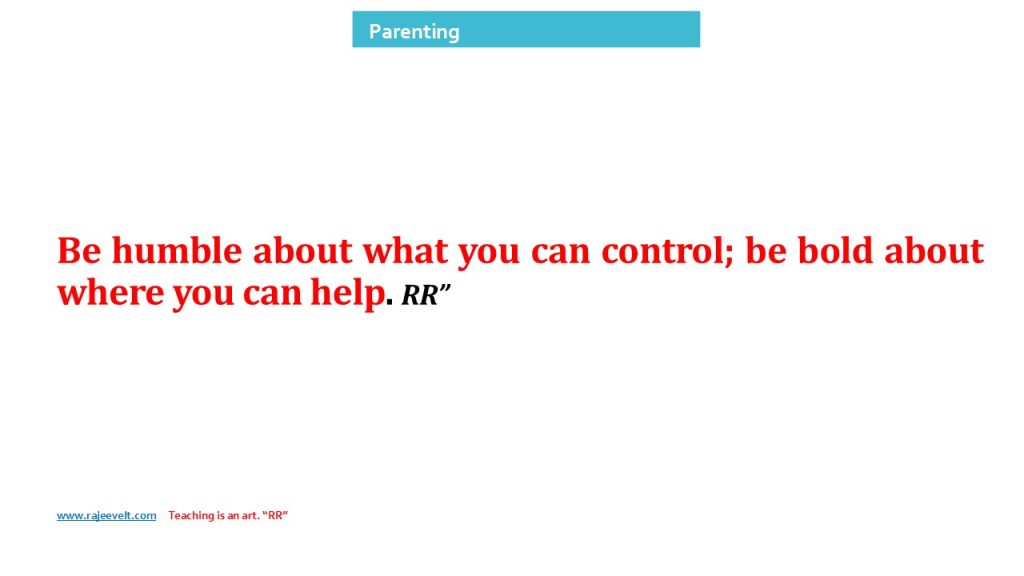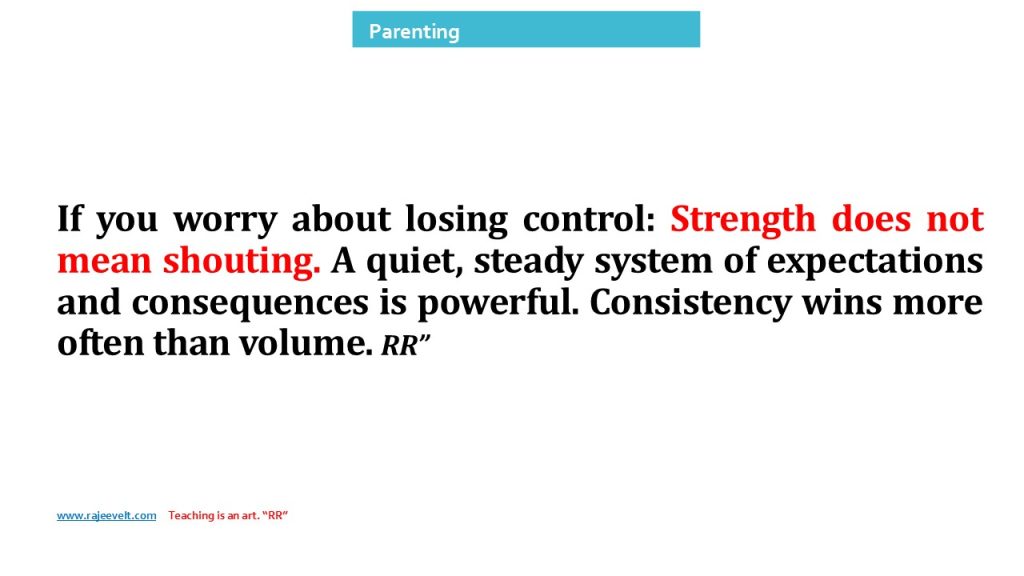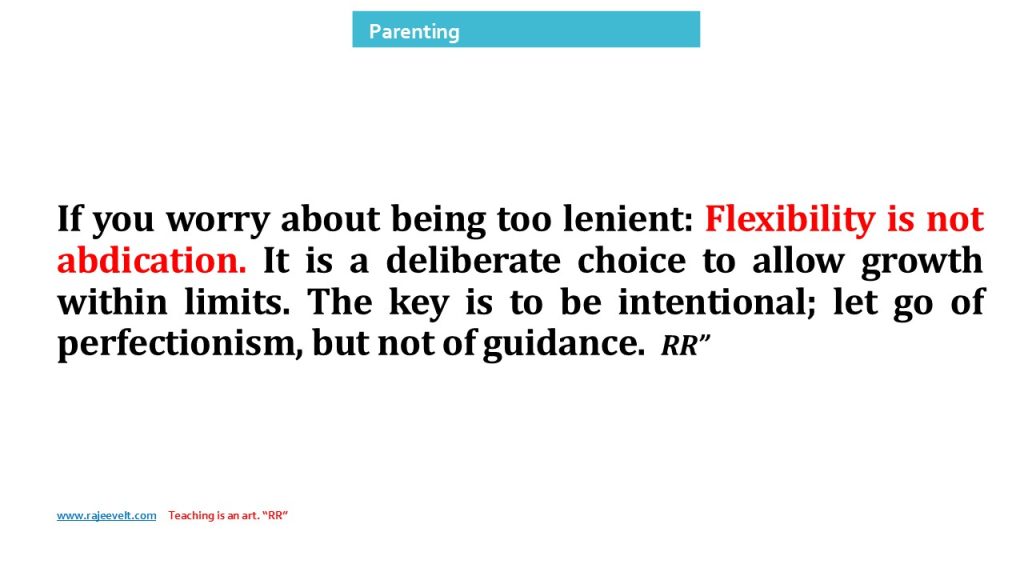Dolphin Parenting- “How to Handle GenZ”
Dolphin parenting is a balanced and mindful approach that blends firmness with freedom, guiding children with empathy, structure, and open communication. Dolphin parents neither control excessively nor allow complete independence unlike tiger or jellyfish parenting; they swim alongside their children—supportive yet guiding. Dolphin parenting style helps parents stay connected while promoting resilience, responsibility, and emotional intelligence. Dolphin parenting emphasizes listening, collaboration, and setting clear yet flexible boundaries, allowing children to explore their individuality within a safe framework. Its importance lies in nurturing confidence, adaptability, and mental well-being in an age dominated by technology and social pressures. We observed that dolphin parenting equips today’s youth to succeed both emotionally and intellectually, creating a harmonious bridge between traditional values and modern challenges.
Imagine a dolphin cutting through the sea—alert, playful, moving with purpose and ease. The image is graceful but strong. It is this very picture that inspired a new way of thinking about raising children: dolphin parenting. The phrase was coined by Dr. Shimi Kang, a psychiatrist who wanted a middle path between the strictness of the “tiger” parent and the permissiveness of the “jellyfish” parent. Dolphin parenting captures both firmness and warmth, rules and play, guidance and freedom. It asks parents to steer, not to command; to support, not to smother. drshimikang.com


What is dolphin parenting?
Dolphin parenting is an approach that blends structure with curiosity. Parents set clear expectations and limits. They also value play, creativity, and exploration. Where the tiger parent pushes relentlessly for performance, and the jellyfish parent deserts the role of guide, the dolphin parent stays present: firm when needed, flexible when possible. The child is invited to try, to err, to ask questions, and to carry responsibility in age-appropriate ways. Psychology Today+1
Dolphin parenting is often described as a modern descendant of what psychologist’s call “authoritative parenting.” Authoritative parents combine warmth and responsiveness with consistent boundaries. They talk with their children; they reason and they listen, but they do not cede the role of caregiver and guide. This balance—demanding enough to encourage responsibility, responsive enough to nurture confidence—is central to the dolphin way. PMC
Why the metaphor fits: strength with suppleness
A dolphin’s body is firm and muscular, yet it bends and flows. It moves within social groups, protects its young, but also plays. That dual quality—strength mixed with playfulness—matters because raising a child never calls for only firmness or only tenderness. Children need both. They need rules to feel safe, and they need freedom to become. The metaphor reminds us: discipline without warmth can harden a child’s heart; warmth without limits can leave a child unprepared for life’s demands.
What research says — the science behind the idea
Dolphin parenting is rooted in decades of work on parenting styles. Starting with Diana Baumrind in the 1960s, researchers identified several broad approaches—authoritative, authoritarian, permissive, and neglectful—and examined how they shape child development. Across many studies, the authoritative style consistently shows links to positive outcomes: better self-regulation, stronger social skills, higher academic achievement, and greater emotional well-being. In short, when parents are both responsive and reasonably demanding, children tend to succeed. JSTOR+1
More recent reviews and meta-analyses continue to find the same pattern. Authoritative parenting—warmth plus structure—correlates with better school performance and healthier adjustment than either strictness without warmth or indulgence without limits. These are correlations, not ironclad guarantees. Still, the weight of evidence nudges us toward a balanced model: children benefit when they are encouraged, and when boundaries are steady yet flexible. arno.uvt.nl+1
Beyond general parenting research, advocates of the dolphin approach point to how it actively supports creativity and internal motivation. Where pressure can make children obey rules for approval or fear, a dolphin-style environment encourages curiosity. Kids learn to ask “Why?” and “What if?” rather than merely “Did I please you?” Studies on motivation show that internal drive—the kind that sustains learning when no one is watching—grows best when children feel safe, competent, and respected. drshimikang.com+1

How dolphin parenting helps children grow: five concrete pathways
Parents often ask: “How will this help my child, day by day?” The dolphin approach supports growth along several clear lines.
1. Self-regulation and confidence
When parents combine clear limits with warm responses, children practice making choices and facing consequences without fear. Over a period of time, they build impulse control and confidence. A child learns restraint because the home offers consistent rules, not because the parent shouts or punishes unpredictably. That steadiness, repeated every day, becomes the child’s inner voice. Research ties authoritative parenting to stronger self-regulation and fewer behavioural problems. PMC
2. Motivation that comes from within
Pushing children hard can create short-term performance; however, it often weakens long-term curiosity. Dolphin parents encourage exploration, celebrate effort, and invite reflection. They ask, “What did you enjoy?” more than “What grade did you get?” This shifts the focus from external rewards to the joy of learning itself. We observe that internal motivation is the kind that carries a child through high school homework, through new skills, and into adult life. drshimikang.com
3. Better social skills and relationships
Dolphin parents’ model cooperative behavior. They show children how to listen, to compromise, and to apologize. They teach the social tools that matter in friendships, school, and later workplaces. Children raised this way tend to be more empathetic and better at resolving conflicts without rage or withdrawal. Evidence from developmental research supports the link between responsive parenting and prosocial behavior. PMC
4. Resilience in the face of setbacks
When children are allowed to fail in a supportive setting—when failure becomes a lesson, not a disaster—they learn to recover. Dolphin parents do not rescue kids from every problem. Rather, they coach them through difficulty, offering perspective and practical help. Resilience grows in small daily trials: a missed goal in a game, a poor test score, a friendship quarrel. These become practice for adulthood. Parents
5. Creativity and problem-solving
Children who are encouraged to explore, tinker, and question develop flexible thinking. Dolphin parents give children space for unstructured play—time to build, imagine, and invent. That quiet permission to wander intellectually often leads to creative thought. In a world where many problems require novel solutions, such an ability is priceless. Fatherly

Real-life vignettes
The dolphin way in practice
Theory is useful. But real life is what tests a parenting idea. We will go through three short stories—ordinary scenes that show dolphin parenting in action.
The painting that wasn’t perfect
Eight-year-old Meera came home with a school painting that did not look like the teacher had hoped. Tears followed. Her mother, Neha, took the paper, praised the colors Meera chose, and asked gently about the idea behind the painting. When a teacher later suggested the child should have tried harder, Neha invited Meera to practice more if she wanted, but she did not scold. They set aside an hour twice a week for art experiments. Meera tried new brushes, made messy collages, and discovered a style she loved. Years later, she still paints for joy. The rule here was simple: hold standards, but make space for play and growth.
The late-night study session
Arjun, a high-schooler, was anxious before exams. His father, Rajeev, noticed the anxiety creeping into arguments. Rajeev sat with him, helped plan a balanced study schedule, and reminded him to sleep instead of pushing harder. They agreed on a rule: no screens after 10 p.m. on study nights. Rajeev checked in, not to enforce by fear, but to support by asking what worked and what did not. Arjun learned time-management and kept his calm. He did well—not because his father demanded perfection, but because he offered structure with empathy.
The scraped knee and the tough lesson
Seven-year-old Aarav wanted to climb the neighbourhood wall faster than he was ready to. He fell and scraped his knee. His mother, Suman, cleaned the wound, but she did not forbid climbing forever. Instead, she taught proper technique, practiced with him, and set a safer height limit for a while. Over a period of time, Aarav learned to assess risk and grew more careful. The wound healed; so, did the lesson in courage mixed with prudence.
Each story shares a pattern: presence, clear limits, and encouragement for the child’s autonomy. That is dolphin parenting in the small, daily choices.
Practical tools for parents who want to try the dolphin way
You do not need a handbook to begin. These are simple practices to adopt at home today.
1. Set a few non-negotiables—and let other things float
We should choose two or three rules that matter most: safety, kindness, honest behaviour. We should make those steady. For other areas—clothing choices, certain hobbies—allow freedom. Children feel safe when they know the boundaries that will not change. They also learn independence when their choices matter in lesser arenas.
2. Praise effort, not just result
When a child tries hard, acknowledge the attempt. Say, “I noticed how much time you spent on that,” rather than, “You must get top marks.” This develops a growth mindset and keeps curiosity alive.
3. Teach decision-making in steps
We should give children choices within limits. For small children: “Do you want toast or porridge?” For teenagers: “Do you prefer studying on weekdays or weekends for this subject?” We observed that choices teach responsibility. Over time, add complexity: let them plan a family outing or manage a small allowance.
4. Model calm problem-solving
Children learn more from what we do than what we say. Show them how to plan, how to apologize, how to manage frustration. Let them see you recover from mistakes, ask for help, and say “I’m sorry” when needed.
5. Adopt play and downtime
We observe that unstructured play is a laboratory for creativity and social learning. We should make room in the schedule for free play and for family conversation without devices. These are the quiet hours when curiosity and resilience grow.
6. Keep discipline predictable and respectful
When rules are broken, enforce consequences that fit the action and the child’s age. Explain the reason calmly. Repetition of this pattern teaches fairness and builds trust.
Common concerns—and how to respond
Many parents worry that being “too soft” will produce spoiled children. Others fear that being strict will stifle their child. Dolphin parenting meets both fears with balance.
If you worry about losing control: Strength does not mean shouting. A quiet, steady system of expectations and consequences is powerful. Consistency wins more often than volume.
If you worry about being too lenient: Flexibility is not abdication. It is a deliberate choice to allow growth within limits. The key is to be intentional; let go of perfectionism, but not of guidance.
If you worry about cultural expectations: Every culture has norms. Dolphin parenting is adaptable. You can preserve important traditions while applying warmth and reason in daily interactions.
The limits and cautions
No single approach fits every child. Some children—those with certain temperaments or special needs—may require more structure or more individual support. Dolphin parenting asks for attentiveness: notice how your child responds, and adjust.
Research shows correlations, not iron-clad cause-and-effect. A family’s socioeconomic context, schooling, temperament, and community support all influence outcomes. Parenting style is a major piece, but not the entire puzzle. Be humble about what you can control; be bold about where you can help.
Finally, dolphin parenting assumes parents have time and emotional bandwidth. Many parents juggle long hours, stress, and health issues. In such cases, small consistent changes—short nightly conversations, predictable mealtimes, calm consequences—can still make a large difference.
How schools and communities can echo the dolphin approach
Schools that value exploration, project work, and social-emotional learning mirror the dolphin philosophy. When teachers set clear expectations while encouraging student voice, children receive a consistent message from both home and school. Community programs—sports, art classes, youth clubs—that allow safe risk and guided feedback extend the learning beyond the household.
Policymakers and educators can support parents by funding after-school programs, training teachers in student-centered practices, and promoting mental-health resources. When the wider world supports both structure and curiosity, children receive reinforcement at every turn.
A few myths, gently corrected
Myth: Dolphin parenting means no rules.
Reality: It means selective rules—important ones remain firm, other areas are flexible.
Myth: Children will take advantage of leniency.
Reality: Most children respond to consistent limits. They test boundaries, yes, but they also learn from steady consequences.
Myth: It leads to mediocrity.
Reality: Dolphin parenting often produces motivated, self-directed learners. Many creative and successful adults trace their habits to childhood homes where curiosity was valued and rules were fair.
Measuring progress—what to look for
Change does not happen overnight. Yet over months and years, some signs suggest the dolphin approach is working:
- The child speaks openly about feelings and problems.
- The child takes on chores or responsibilities without constant prodding.
- Frustrations are expressed in words more often than in tantrums.
- The child shows curiosity: asks questions, experiments, returns to tasks after failure.
- Family conversations are calmer, with room for laughter and debate.
If these signs are present, the household has likely shifted toward the balance that dolphin parenting seeks.
Final reflections: raising humans, not trophies
We firmly believe that parenting is less an art of perfect control than an art of steady presence. We do not raise résumé items. We raise human beings who will live in a messy, unpredictable world. The dolphin path asks us to blend firmness with play, boundaries with wonder. It asks us to stand beside our children as they learn courage and kindness.
In practice, this means more listening, more modelling, and fewer ultimatums. It means celebrating effort more than outcome, and teaching children to be accountable without breaking their spirit. It means laughter at the kitchen table, rules that are clear, and the soft power of a parent who trusts a child to try.
The sea is wide, and the world beyond the shore is waiting. If we parent like dolphins—strong, social, and supple—our children will have a better chance to swim with confidence. They will be curious, capable, and kind. They will be ready to meet both tests and wonders, not because we demanded it, but because we guided them into becoming it.
Resources
· Kang, Shimi. The Dolphin Way: A Parent’s Guide to Raising Healthy, Happy, and Motivated Kids—Without Turning into a Tiger. TarcherPerigee, 2014.
· American Psychological Association (APA). “Balanced Parenting Approaches and Child Well-being.” APA Journal of Family Psychology, 2021.
· Ginsburg, Kenneth R. “The Importance of Resilience and Balanced Parenting in the Digital Age.” Pediatrics Journal, American Academy of Pediatrics, 2020.
· Harvard University Center on the Developing Child. “Parenting with Emotional Intelligence and Positive Discipline.” 2022.
· Psychology Today. “Dolphin Parenting: The Balance Between Authoritative and Permissive Styles.” Retrieved 2024 from www.psychologytoday.com


